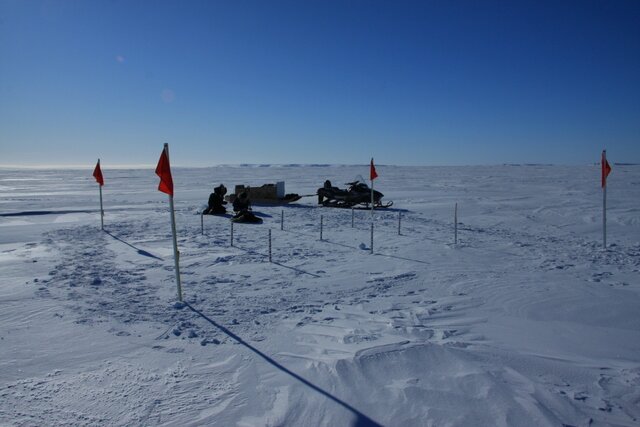Project Overview
Inuit communities throughout the Canadian Arctic, including Nunatsiavut, are reporting changing climatic conditions that are influencing sea ice safety and stability for human travel and land/resource access. Sea ice serves as an important trail and access point to key travel and hunting areas around communities; this safe connection to land and sea is critical for Inuit health and well-being.
Many communities have identified the need to document changes in local ice conditions that threaten safe travel and hunting. Therefore, community based monitoring stations have been established to enhance community capacity to observe, track and learn about and eventually adapt to changes in local sea ice conditions associated with climate and other forms of environmental change and variability. Sea ice observation stations were established throughout Nunatsiavut.
A simple and robust method already used in the North, along with reliable equipment was used to ensure that communities collected high quality data. These data help inform residents of the safety and conditions of sea ice in the local environment, which ultimately is aimed at reducing the risk of injuries, trauma and anxiety related to the changing ice environment. The weekly sea ice conditions are made available to the community through bulletins, radio broadcasts, social networking and word of mouth. The monitoring and communication of ice conditions in the local environment around communities supports community learning and adaptation and ultimately helps to reduce or mitigate exposure to ice related hazards for human safety in Inuit communities.
Traditional / Local Knowledge
Station locations were chosen by local monitors according to the proximity to important trails, their representation of local variability and their use as sentinel locations for ice conditions in surrounding areas. The ultimate objective of the project is to lead to the development of community-led and operated monitoring, surveillance and communication networks in these communities that use both local Inuit and scientific knowledge and observation techniques and that provide real time, weekly ice condition updates.
Field Research and Monitoring
Two ice monitoring stations were installed and maintained at two critical points that are important for travel and hunting for residents of the community of Nain. The stations were installed using the method previously employed in this location for projects funded under Health Canada and used in other Arctic communities (e.g. Nunavik and Nunavut communities). The method uses four simple ice measuring devices and nine snow stakes per station. This allows for an average ice and snow depth at each station. These stations were monitored weekly and the results were disseminated to the community. Community members found these stations very valuable, due to the fact the sea ice was thinner and less predictable than in most years. Residents felt safe using the same routes that the ice monitors used to travel to the stations, knowing that local surveyors are monitoring the area.




Successes
Two ice monitors were trained through the management of Sikumiut Environmental Inc. and Trent University. They learned the process of installing and maintaining the stations while spending time on the land with fellow community members. They gained an understanding of the purpose of the sea ice stations as well as the processes of the sea ice itself over a winter to spring period.
Sea ice, snow conditions and information gained through monitoring stations were disseminated to the community through the local radio station, bulletins, social networking sites and word of mouth. This provided many different ways to try to reach as many community members as possible every week. The information is always available from Sikumiut Environmental Inc. as well. It has been documented that many residents rely on this information on a weekly basis.
Acknowledgments
Thank you to Sikumiut Environmental Inc. and the communities of Nain and Hopedale. This community based research program also benefited from related funding from Health Canada, International Polar Year, ArcticNet and Aboriginal Affairs and Northern Development Canada.





